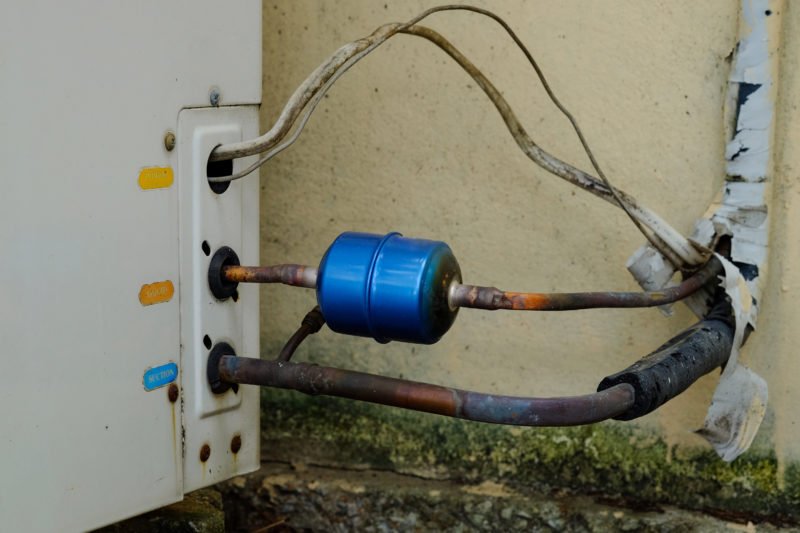Dealing with a Frozen AC Pipe: Effective Techniques
Dealing with a Frozen AC Pipe: Effective Techniques
Blog Article
Just how do you actually feel with regards to Why Is Ice On My Outside Air Conditione?

Intro
Finding that your air conditioner pipeline is frozen can be concerning, particularly throughout warm summer months when you rely upon your ac unit one of the most. Recognizing what to do in such a situation is vital to stop more damages to your air conditioning system and guarantee your convenience inside your home.
Comprehending the Causes
Several factors can add to the cold of an a/c pipeline. Recognizing these causes can help you resolve the concern successfully.
Lack of Airflow
One usual root cause of a frozen air conditioner pipe is inadequate air flow. When the airflow over the evaporator coil is limited, it can trigger the coil to go down below freezing temperature level, resulting in ice development on the pipe.
Low Refrigerant Levels
Inadequate cooling agent degrees in your a/c system can additionally result in an icy pipe. Low refrigerant levels can cause the pressure in the system to drop, bring about the freezing of dampness on the evaporator coil.
Winter Conditions
In colder climates, freezing temperatures outside can contribute to the freezing of a/c pipes. If your a/c device is not effectively insulated or if there are leakages in the ductwork, cool air can penetrate the system, creating the pipeline to freeze.
Dirty Air Filters
Dirty or clogged air filters can restrict airflow in your a/c system, bring about different issues, including an icy pipe. It's necessary to replace or clean your air filterings system regularly to make sure proper air movement and stop ice buildup.
Indications of a Frozen AC Pipe
Recognizing the indications of an icy air conditioning pipeline is essential for punctual action.
Minimized Airflow
If you see a considerable reduction in air flow from your vents, it might indicate a frozen pipe.
Ice Buildup on the Pipe
Noticeable ice build-up on the cooling agent line or the evaporator coil is a clear indication of a frozen air conditioning pipeline.
Unusual Sounds from the Unit
Uncommon audios, such as hissing or gurgling, coming from your AC unit can signal that there's ice present on the pipeline.
Immediate Actions to Take
When faced with a frozen air conditioning pipeline, it's vital to act rapidly to avoid more damage to your cooling system.
Switching off the AC
The primary step is to shut off your a/c unit to stop the system from running and intensifying the problem.
Checking for Blockages
Examine the location around the indoor unit for any type of blockages that may be obstructing airflow, such as furnishings or curtains.
Defrosting the Pipe
You can use mild methods like putting towels taken in cozy water around the frozen pipeline to aid thaw it slowly.
Safety nets
Taking preventive measures can help prevent future occurrences of a frozen a/c pipeline.
When DIY Methods Fail
If your efforts to thaw the pipeline or address other issues are unsuccessful, it's time to call a professional.
Significance of Hiring a Professional HVAC Technician
A licensed HVAC service technician has the proficiency and tools necessary to diagnose and fix problems with your AC system safely and effectively.
Normal Maintenance Checks
Arrange routine upkeep consult a professional HVAC specialist to make sure that your air conditioning system is running successfully.
Altering Air Filters
Frequently replace or clean your air filters to prevent airflow restrictions and preserve ideal efficiency.
Protecting Exposed Pipes
If your air conditioning pipes are subjected to cold temperatures, take into consideration shielding them to avoid cold throughout cold weather.
Seeking Professional Help
If DIY approaches fall short to deal with the problem or if you're uncertain about exactly how to proceed, it's ideal to seek aid from a qualified HVAC service technician.
Final thought
Managing a frozen air conditioning pipe can be a frustrating experience, yet understanding how to respond can assist decrease damage and restore comfort to your home. By recognizing the causes, identifying the indications, and taking prompt activity, you can properly attend to the problem and prevent future occurrences.
G UP? HOW TO FIX IT?
It happens all over America. And the rest of the world probably. It’s the hottest day ever and for some darn reason your AC isn’t cooling the house. You fiddle with the thermostat to try and fix the problem. Nada. All you can do now is go outside and check the AC unit. You make your way there and find your air conditioner unit is frozen! But how?
In this post we’ll cover how you can tell that your air conditioner has frozen (other than the obvious reasons), what could have caused the freeze, and some of the things you can do about your AC freezing up. And if you have a frozen heat pump condenser, read our blog about it to learn what to do! But remember, it is always best to avoid your AC freezing up with an AC tune up. And if you are moving into a home, it's critical to get HVAC inspection so that you are aware of an AC problems before you move in.
Keep reading and you may be able to fix the frozen AC yourself. If you can’t, call an HVAC specialist. If you live in Maryland, call SuperTech HVAC for AC repair. We’ll take care of it.
How Does An Air Conditioning Unit Work?
How you probably imagine an AC works is wrong. Contrary to popular belief, an AC system does not inject cool air into a building. Instead, it removes the heat from inside and transfers it outside. Cool huh? (Pun intended).There are 4 major components among the 3 stations of an air conditioning system: the evaporator coil, the compressor, the condenser, and the refrigerant – a special chemical that links everything together through a closed loop system.
Station 1:
Warm indoor air is sucked into the return vent, through a filter, and blows over the evaporator coil. The heat is absorbed into the cold refrigerant, turning it from liquid to gas. The air, which is now cool, is blown back into the home to areas that your thermostat, i.e. you, has decided.
Station 2:
The refrigerant makes its way outside the house to the compressor, which squeezes the warm refrigerant, raising its gaseous temperature even more.
Station 3:
When the super hot vapor refrigerant reaches the condenser, the last step, the heat is expelled and absorbed into the outdoor air. The refrigerant instantly cools, which changes it from gas back to liquid form. The cold liquid refrigerant is now ready to return to station 1 and repeat the process.
Is Your AC Freezing Up? Here Are The Signs:
As you may have guessed, your air conditioner unit freezing up on a hot day is not normal.
If this happens, there's no need to panic. Often the issue can be solved with a little troubleshooting. If the AC unit is left frozen for too long however, you may find yourself with a bigger problem.
First things first, how do you know your AC is frozen?
Well, the obvious sign is the ice on your refrigerant line-set pipe. Simply check between your outdoor AC unit and your home's exterior wall to see whether your AC line frozen.
You might also have a frozen evaporator coil. This one's not as easy to check. You'll need to open a panel on the indoor unit to inspect. Don't do this unless you're handy. If you aren't, call an HVAC pro like SuperTech HVAC or you may damage something in the process.

I was made aware of that editorial on Air Conditioner Frozen? How To Fix your Frozen AC Line from a friend on another blog. Those who enjoyed our article if you please do not forget to share it. Thank you for your time. Don't hesitate to come visit our blog back soon.
Request Free Estimate Report this page